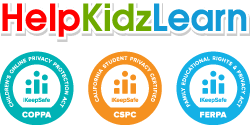Practical Ways to Use Sensory Space in the SEN Classroom.
Sensory Space develops key cause and effect skills while making lessons more engaging. With creativity, its activities can transform everyday topics and routines into rich, interactive sensory learning experiences.

Themed learning.
Link Sensory Space activities to topics of special interest or curriculum themes to make lessons more engaging. By tying sensory input to what you’re already teaching, learners stay connected and motivated. • Leaves – Ideal for autumn units or outdoor learning. Pair the on-screen visuals with discussions about seasons and nature. • Fire Trail – Perfect for dragon or fantasy themes. Use the glowing flames to bring storytelling sessions to life. Using alongside Sir Pranceabout and the Dragon from Inclusive Stories would be perfect. • Jelly Fish, Aquarium, Bubble Tube – Great for ocean or water topics, adding a sensory dimension to geography or science. • Stars, Spaceship, Milky Way – Support space-themed exploration, sparking curiosity about planets and the night sky. • Butterflies, Snakes, Jelly Fish – Link to animal themes, encouraging learners to notice movement and patterns in nature.
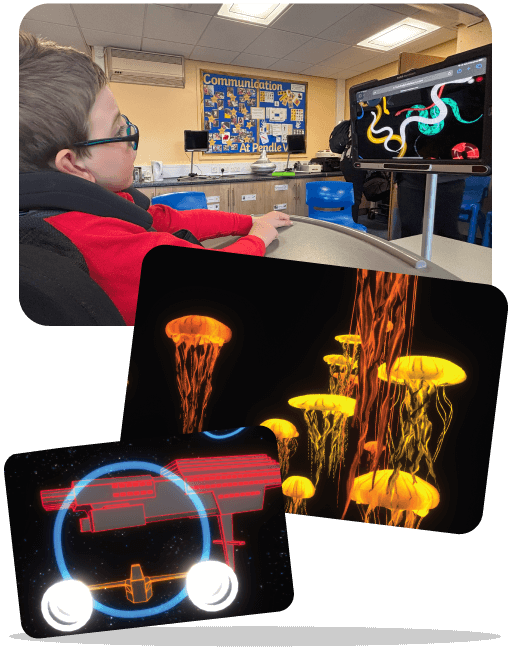
Multi-sensory exploration.
Deepen the impact of activities by combining digital experiences with real-world props, textures, and sounds. This multisensory approach helps learners generalise skills and makes learning more memorable. • Leaves – Provide a bag of real leaves to touch, smell, and crunch while watching them blow across the screen. • Bubble Tube – Blow real bubbles alongside the digital version, encouraging learners to pop them as they rise. • Disco Ball – Add a switch-adapted disco light in the room, letting learners compare the on-screen reflections with those around them. • Stars, Spaceship, Shooting Stars, and Milky Way – Combine the on-screen visuals with glow-in-the-dark stars, torches, or a sensory tent for a space station experience. • Jelly Fish or Aquarium – Extend the experience with a water tray or play with jelly. Learners can explore marine-themed props while interacting with the visuals.
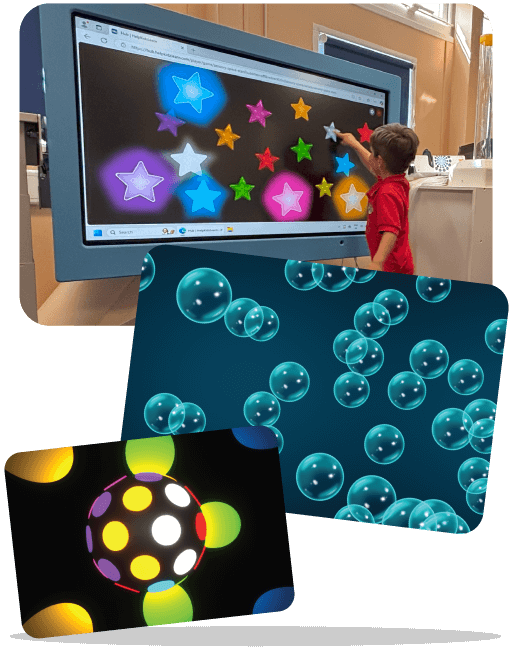
Lesson starters & transitions.
Short sensory activities can capture attention, mark change, or help learners shift focus smoothly. Change the colours and music to suit the learner or the tone of the lesson. • Stars or Butterflies – Great for starting lessons. Ask learners to focus on the visuals while you introduce the session. You could pair this with calming music to settle, or upbeat tracks to energise. • Lava Lamp – Use as a calming transition between lessons. Learners can watch the gentle movement while preparing for the next activity. In a group setting, invite students to take turns starting and stopping the animation with a switch. • Emojis – Perfect for end-of-day reflection. Encourage learners to pick an emoji that represents how they’re feeling. This can open up communication, build self-expression, and provide staff with valuable insights into wellbeing.
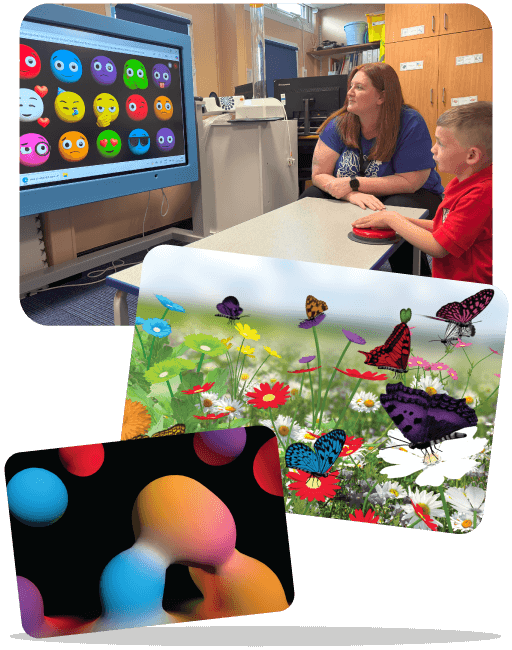
Extending engagement through challenges.
Some learners thrive when activities are adapted to include challenges, extending focus and promoting decision-making. • Cannon – Instead of free play, set a challenge: “Can you make the red ball jump?” or “Can you find the blue ball?” This encourages learners to make deliberate choices and improves colour recognition. • Butterflies – Challenge learners to count how many butterflies they can release, or to look for specific colours. • Emoji– Ask learners to activate a certain emotion (e.g. a happy face or sad face), supporting attention and listening skills.
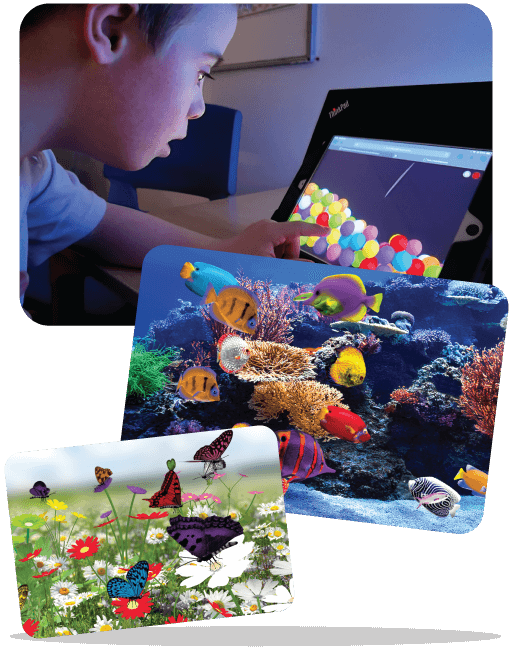
Tailoring activities to learners’ needs.
Every learner engages differently, and Sensory Space makes it simple to personalise each session. • Multiple access methods – Activities can be used with eye gaze, switches, touch, or mouse control, so every learner can take part in a way that suits them. • Custom playlists – Educators can group activities together to create calming routines, skill-building progressions, or themed lessons, making it easy to deliver consistent, structured sessions. • Personalised colours and music – Each activity can be adapted with different colour palettes and soundscapes, from calming nature tones to bright, high-energy effects. This ensures every learner has the right level of sensory input to engage and succeed.
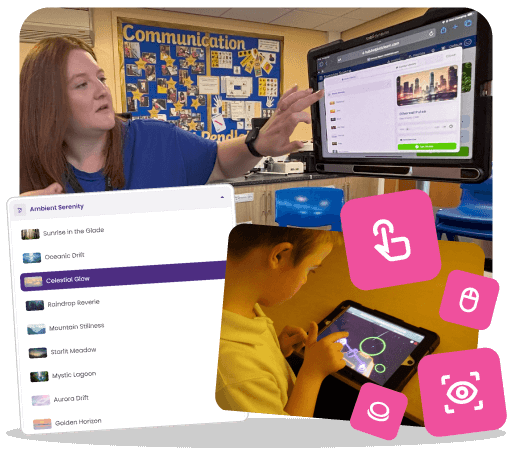
Get your free trial of Sensory Space.
If you’re not yet using Sensory Space, why not try our FREE 14 day trial? It’s easy to get started and doesn’t require any credit card details. You’ll gain access to all the sensory activities, so you can use them with your students and see how much they enjoy using them.

